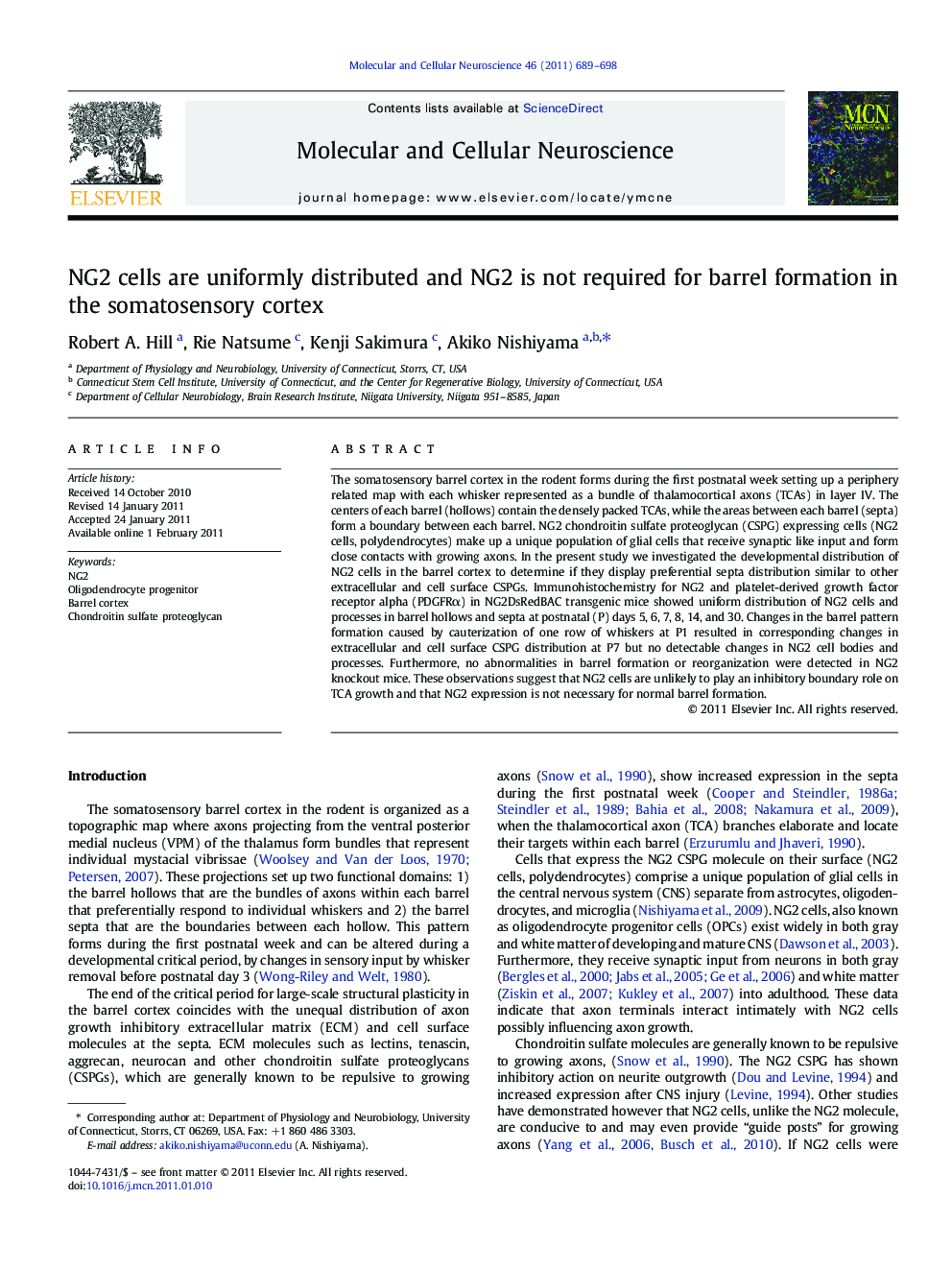| Article ID | Journal | Published Year | Pages | File Type |
|---|---|---|---|---|
| 2198646 | Molecular and Cellular Neuroscience | 2011 | 10 Pages |
The somatosensory barrel cortex in the rodent forms during the first postnatal week setting up a periphery related map with each whisker represented as a bundle of thalamocortical axons (TCAs) in layer IV. The centers of each barrel (hollows) contain the densely packed TCAs, while the areas between each barrel (septa) form a boundary between each barrel. NG2 chondroitin sulfate proteoglycan (CSPG) expressing cells (NG2 cells, polydendrocytes) make up a unique population of glial cells that receive synaptic like input and form close contacts with growing axons. In the present study we investigated the developmental distribution of NG2 cells in the barrel cortex to determine if they display preferential septa distribution similar to other extracellular and cell surface CSPGs. Immunohistochemistry for NG2 and platelet-derived growth factor receptor alpha (PDGFRα) in NG2DsRedBAC transgenic mice showed uniform distribution of NG2 cells and processes in barrel hollows and septa at postnatal (P) days 5, 6, 7, 8, 14, and 30. Changes in the barrel pattern formation caused by cauterization of one row of whiskers at P1 resulted in corresponding changes in extracellular and cell surface CSPG distribution at P7 but no detectable changes in NG2 cell bodies and processes. Furthermore, no abnormalities in barrel formation or reorganization were detected in NG2 knockout mice. These observations suggest that NG2 cells are unlikely to play an inhibitory boundary role on TCA growth and that NG2 expression is not necessary for normal barrel formation.
